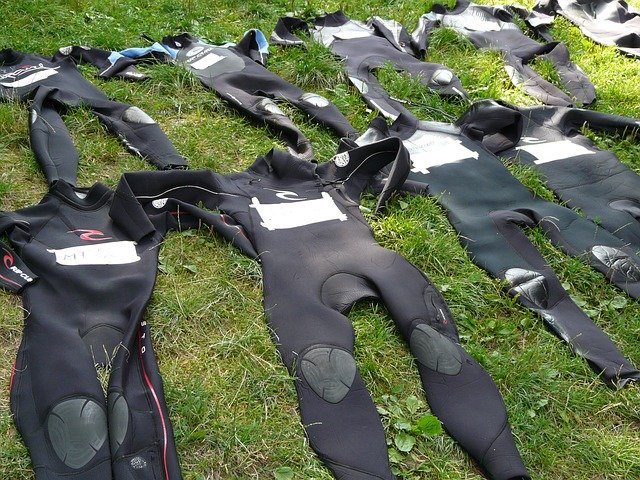Neoprene in construction
Contents |
[edit] Introduction
Neoprene is a synthetic rubber made from hydrochloric acid and acetylene, or from the polymerisation of chloroprene. It is also known as polychloroprene and pc-rubber. Developed by US-based DuPont in the 1930s, it was first sold under the trade name DuPrene, but its success was hampered by a powerful odour. This was rectified by the introduction of a revised, cheaper process which allowed sales to increase dramatically.
[edit] Properties
Neoprene is relatively inert and, compared to ordinary rubber, is more chemically stable. It shows greater resistance to ozone, UV degradation, light, heat, oxidation and petroleum and remains flexible over a wide range of temperatures. Its pliability and corrosion resistance make it suitable for use in hoses and as gaskets (for example, for sealing glazing and cladding units).
Neoprene itself tends to be waterproof, but neoprene products can allow the entry of water though seams or if they are cracked or damaged.
It is available in a number of forms including sheet, roll and strip, and in thicknesses typically from 0.1mm to 25mm.
[edit] Applications
In the home, neoprene can be found in products including remote controls, mouse pads and laptop sleeves.
It is used in construction for applications including; elastomeric membranes and flashings, noise isolation, electrical insulation, motor fan-belts and gaskets. Because it is more fire resistant than hydrocarbon-based rubbers, it can be used for fire doors and in personal protection equipment such as face masks and gloves.
Neoprene can be applied as a waterproofing layer on roofs in either sheet or liquid-applied elastomeric membranes. It can also provide the load-transferring contact surface between two components, such as a beam and the substructure, and can absorb vibration and prevent sound transmission. Neoprene pads are used for bearings in bridge construction where they can absorb horizontal movement in multiple directions.
Used as a foam strip, or foam tape, neoprene offers a solution to air and water leakage problems and is used widely for glazing applications.
[edit] Related articles on Designing Buildings Wiki
- Adhesives
- Acrylic.
- Carbon fibre
- Cavity wall insulation
- ETFE
- Glass for buildings
- Glass reinforced concrete
- Glass reinforced plastic GRP
- Graphene in civil engineering
- Grouting in civil engineering.
- Icynene spray foam insulation
- Mastic sealant
- Nylon
- Phenolic foam insulation
- Plastic
- Polyamide intermediates
- Polyethylene.
- Polystyrene
- Polyurethane spray foam in structurally insulated panels and composite structures
- Polyvinyl chloride PVC
- Recyclable construction materials
- Renewable chemicals
- Solid wall insulation
- Structural steelwork
- Sustainable materials
- Thermoplastic materials in buildings
- Transparent insulation
Featured articles and news
The benefits of engaging with insulation manufacturers
When considering ground floor constructions.
Lighting Industry endorses Blueprint for Electrification
The Lighting Industry Association fully supports the ECA Blueprint as a timely, urgent call to action.
BSRIA Sentinel Clerk of Works Training Case Study
Strengthening expertise to enhance service delivery with integrated cutting-edge industry knowledge.
Impact report from the Supply Chain Sustainability School
Free sustainability skills, training and support delivered to thousands of UK companies to help cut carbon.
The Building Safety Forum at the Installershow 2025
With speakers confirmed for 24 June as part of Building Safety Week.
The UK’s largest air pollution campaign.
Future Homes Standard, now includes solar, but what else?
Will the new standard, due to in the Autumn, go far enough in terms of performance ?
BSRIA Briefing: Cleaner Air, Better tomorrow
A look back at issues relating to inside and outside air quality, discussed during the BSRIA briefing in 2023.
Restoring Abbotsford's hothouse
Bringing the writer Walter Scott's garden to life.
Reflections on the spending review with CIAT.
Retired firefighter cycles world to raise Grenfell funds
Leaving on 14 June 2025 Stephen will raise money for youth and schools through the Grenfell Foundation.
Key points for construction at a glance with industry reactions.
Functionality, visibility and sustainability
The simpler approach to specification.
Architects, architecture, buildings, and inspiration in film
The close ties between makers and the movies, with our long list of suggested viewing.
SELECT three-point plan for action issued to MSPs
Call for Scottish regulation, green skills and recognition of electrotechnical industry as part of a manifesto for Scottish Parliamentary elections.
UCEM becomes the University of the Built Environment
Major milestone in its 106-year history, follows recent merger with London School of Architecture (LSE).
Professional practical experience for Architects in training
The long process to transform the nature of education and professional practical experience in the Architecture profession following recent reports.























